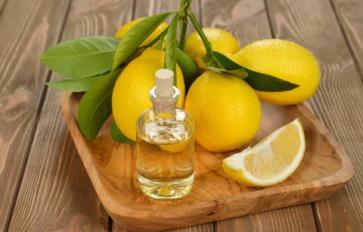
Now that spring is here, you might be tempted to start cleaning things, head to toe. Nothing wrong with that! But I'm here to make sure you're doing it right: Here are five sustainable spring cleaning tips you need to hear.
1. Use Natural Cleaners
Forget about conventional cleaners: They’re loaded with questionable ingredients and almost always packaged in plastic. With only 9 percent of plastic actually getting recycled, it’s best to limit our plastic usage as much as possible. Not to mention, conventional cleaners are bad for the environment, too: When they go into the air, or get washed down the drain, they cause pollution. Conventional cleaners cause both air and water pollution and can be harmful to human health as well as biodiversity. Let’s put an end to this once and for all and start using natural cleaners in our homes.
Natural cleaners are not only better for the environment and your health, but also great for your personal finances. Your wallet will thank you when you choose natural cleaners because they’re much cheaper to make yourself. In fact, most natural cleaners can be made simply from ingredients you probably already have around your home.
All-Purpose Cleaner
Ingredients
- 1/2 cup white vinegar
- 2 Tablespoons baking soda
- 10 drops lemon or orange essential oil
Directions
- First, combine the vinegar and essential oils in a spray bottle, then add the baking soda.
- Mix well, then add water to fill the bottle to the top.
- Gently shake to mix all ingredients together.
- When ready to use, simply spray on the area you’d like to clean and wipe with a cloth.
Extra Tough All-Purpose Bathroom Cleaner
Ingredients
- 1 teaspoon baking soda
- 1 teaspoon washing soda
- 1 teaspoon liquid castile soap
- 1/2 cup white vinegar
- 2 cups hot water
- 25 to 30 drops lemon, orange, grapefruit, tea tree or eucalyptus essential oil
Directions
- Combine the baking soda, washing soda, castile soap and white vinegar in a large bowl or measuring cup.
- Slowly add water and stir.
- Allow the mixture to cool and then add the essential oil.
- Pour it into a spray bottle using a funnel.
2. Donate Unwanted Things
When you do your spring cleaning, chances are you’ll find some items you no longer have a use for lying about your house. Don’t just throw them away! If something is broken, try to repair it, or get it repaired. If something just no longer interests you, be sure to donate it somewhere it’ll find a good home. Most clothes can be donated thrift stores, if they’re in good enough shape. You can also find a local vintage store that would be willing to accept your donations—they usually take everything from clothing to fine china to old toys. If you’ve found some spare feminine products you don’t need anymore, like tampons and pads, find a local women’s shelter you could possibly donate them to, or give them to a friend in need. Whatever the case, just make sure items don’t go in the trash. Throwing them away is a last resort. Whatever cannot be donated should be recycled or upcycled somehow.
3. Utilize Natural Air Fresheners
When spring rolls around, you want to really capture that beautiful, refreshing atmosphere. After a long winter, the house can get rather stuffy, after all. Not to mention indoor air pollution is a thing and can really disrupt your quality of life. However, that doesn’t mean you should rely on synthetic air fresheners to get that “fresh” smell. Believe it or not, synthetic air fresheners could be contaminating your home with formaldehyde and phthalates. No thanks, right? To freshen up the room, just try opening the window up first, as that’ll get rid of any musty smells. Next, invest in some houseplants that improve air quality. You’ll naturally be able to remove all kinds of nasties from the air, like benzene, trichloroethylene, and formaldehyde, just by having houseplants on hand. Poor air quality can lead to a ton of health problems, such as asthma or even increased risk of cancers, strokes, and diseases. Try adding some aloe, snake plant, pothos, or gerbera daisy to your home to naturally freshen the air (and spruce up the place). Still prefer traditional air fresheners? Swap them out for natural, DIY air fresheners instead. You can make a simple air freshener from just water and essential oils. Or, you can try using incense, diffusers, or stovetop air fresheners.
DIY Air Freshener
Ingredients
- water (enough to fill spray bottle of choice)
- 25-35 drops of lemon, orange, lavender, rose, or peppermint essential oil
Directions
- Funnel water into a spray bottle of your choice. Make sure to fill it up but definitely leave some head space so it’s easier to add your essential oils and mix them up. Add in your desired essential oils (I personally love a blend of lemon and orange).
- Cap the bottle and shake it up to blend (the oil will separate from the water, but that’s okay). Be sure to shake before use. Spray three to five times to freshen the air naturally.
4. Shine Furniture With Natural Polish
Want to give your wooden furniture a little polishing? Avoid conventional polishing methods and go for a natural one. A simple mixture of lemon juice and olive oil will get the job done and have your wooden furniture shining in no time. I recommend using a wool dusting cloth because the static electricity draws dust to wool. If you don’t have that though, a cotton rag from an old t-shirt works just as well. This will not only be better for the environment, but it’ll also save you a ton of money on wood polish!
5. Use Reusable Wipes & Scrubbers
Last, but certainly not least, ditch the disposable wipes and go for reusable wipes and scrubbers. There's no need to have a trash can full of soiled paper towels after cleaning. Reusable scrub brushes and homemade cloth cleaning rags will get the job done just as well, if not better. My mom loves to save old, worn out shirts for this very purpose—she cuts them up into little, hand-held squares to use for dusting and cleaning nonchalantly around the house. Scrubbing brushes made from wood and bamboo are also fantastic, durable items that can be composted at the end of their life. They’re also incredibly efficient at scrubbing away tough grime, like the yucky stuff sticking to your bathroom tiles right now. Also, ditching synthetic sponges is a good idea because most aren’t really sponges at all—they’re petroleum derived and can contain triclosan, a powerful endocrine disrupter. Plus, after just a few uses, sponges head straight to the landfill where they’ll only break down into dangerous microplastics. If you do prefer cleaning with sponges, go for a more natural option like a sea sponge or those made from wood-pulp cellulose. Even better? Try a loofah, also known as sponge gourds, which you can actually cultivate and grow in your own garden.
Want more ways to have an eco-friendly home? Check out these 5 tips for a non-toxic home.








